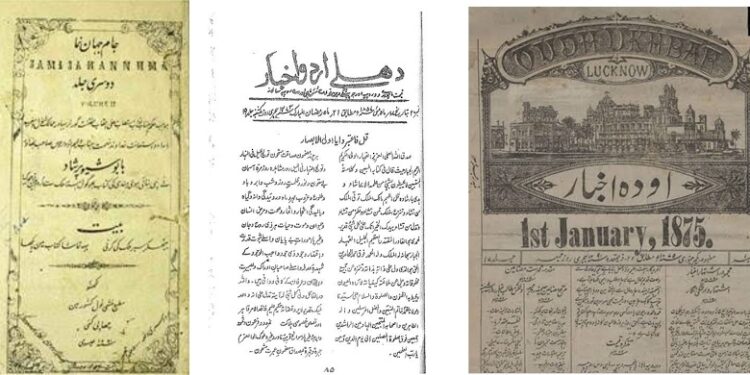
As the Press Club of India celebrated 200 years of Urdu journalism, the plight of Urdu was brought to the fore. Urdu newspaper editors lamented that just a handful of readers are left and they are facing existential crises.
Rohinee Singh
From its glorious past interwoven into the first war of independence of the subcontinent in 1857 to becoming the language of many movements, Urdu journalism last week completed 200 years of its existence. But in its birthplace in India, it is fighting a losing battle because of official apathy – and from being labelled as the language of a particular community.
The Jam-i- Jahan-Numa, a weekly newsletter from the eastern Indian city of Kolkata, is believed to be the first Urdu newspaper that came out on March 27, 1822. It was founded by Harihar Dutt and Sadasukh Lal was its first editor. Neither founder nor editor was a Muslim. Hindi journalism started its journey four years later in 1826. Some historians say that Urdu journalism had begun its journey much earlier. They refer to the Fauji Newspaper backed by Tipu Sultan in the 18th century and Urdu Akbhar edited by Maulvi Akram Ali. But since no copies of these newspapers are currently available, Jam-e-Jahan-Numa is considered the first Urdu newspaper.
After the East India Company replaced Urdu with Persian as the official language, the number of Urdu newspapers grew from one or two to 58. During India’s first war of independence in 1857, it was Urdu which helped to shape public opinion against the British. In fact, Maulvi Baqir, editor of Delhi-based Urdu Akbhar, was the first journalist, who was killed for his writings. He wrote extensively about the revolutionaries, denounced the action of the British and encouraged people and sepoys to fight against the British. Baqir was tied to a cannon and blasted on September 1858.
Urdu, however, continued to remain the language of the freedom movement. From Bhagat Singh, Lala Lajpat Rai, Kartar Singh Sarabha to Ram Prasad Bismil Azimabadi everyone used Urdu as their language to reach out to the masses during the freedom movement.
The government-in-exile of undivided India, which was set up in Kabul, led by Raja Mahendra Pratap Singh and including Maulavi Barkatullah as prime minister and Maulana Ubaidullah Sindhi as home minister also adopted Urdu as its official language.
While the British controlled English dailies of that time, preferred not to confront the government, it was Urdu journalism in the form of newspapers like Zamindar, Avadh, Hamdard, Milap, Taj and many others, that were shaping public opinion against colonial powers.
Victim of Partition
But as Partition tore the lives of many people in the Subcontinent, it also ripped Urdu apart. “Partition not only mired lives of people, but also this beautiful language. Urdu was left abandoned in the streets to fend for itself and struggled for someone to own it up,” Qurban Ali, a senior journalist, told The Friday Times.
After the Partition, Hindus abandoned Urdu, coming to see it as the language of Muslims and Pakistan. The successive governments also withdrew their patronage and replaced it with Hindi.
From being a language that was read from Peshawar to Kolkata and from Kashmir to Deccan, Urdu today has been restricted to madrasas in India. From being the language of Hindustan, it has been reduced to the language of Mussalman. According to census figures, out of 1.3 billion people, only 80 million people now can read and write Urdu.
Last month, when the Press Club of India celebrated 200 years of Urdu journalism, the plight of Urdu was brought to the fore. Urdu newspaper editors lamented that just a handful of readers are left and they are facing existential crises.
Several Urdu newspapers, including Nai Dunya, once sold to millions, have shut up like many other popular publications.
“From on-the-spot to investigative stories, Urdu newspapers had them all. But today we need to ask ourselves, how many such investigative stories do we do? How many of our stories have made an impact and have got mainstream media to follow them?” asks journalist Shams Tabrez Qasim, the founder of Millat Times.
And while Urdu journalism may continue to harp about its glorious past, in absence of a roadmap towards a future, the language will not be able to regain its lost stature.
___________________
Courtesy: The Friday Times Lahore